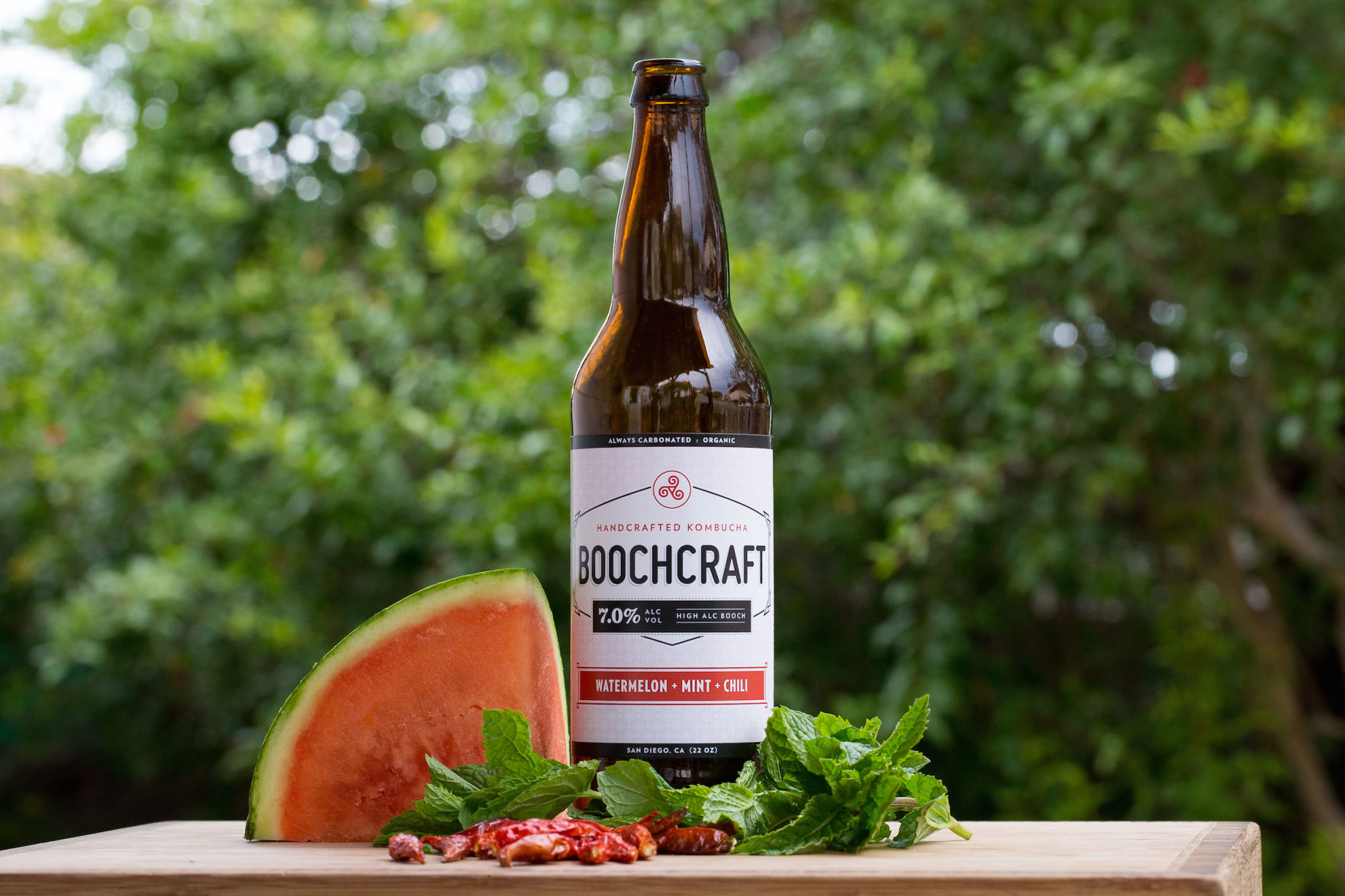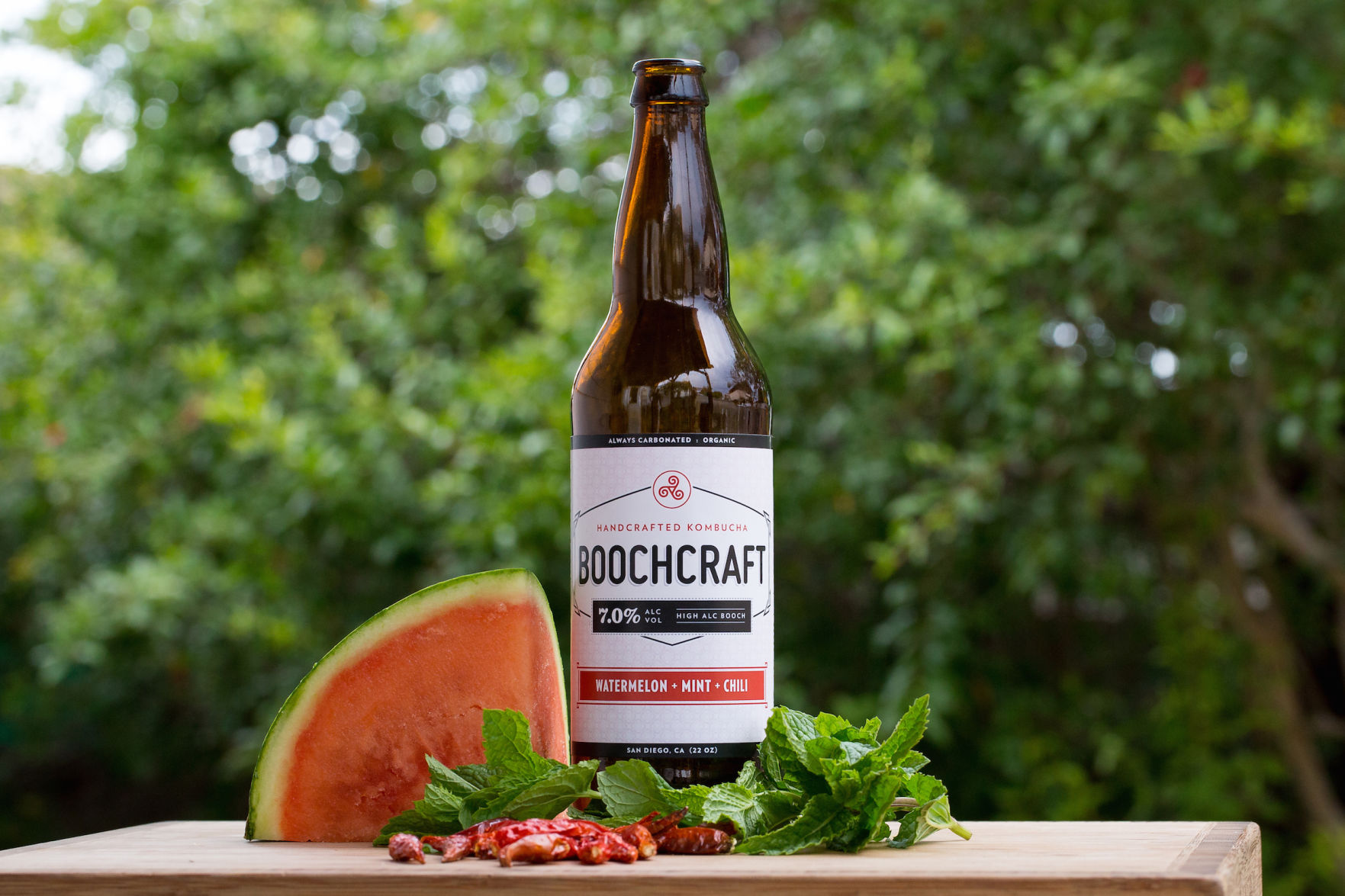Kombucha is a polarizing beverage. Some people love the lightly sweetened, fermented and carbonated tea. Some people say it tastes like mushroom sweat. The yoga pants crowd loves it for its purported health properties, since the scoby (symbiotic culture of bacteria and yeast) produces enzymes that are said to aid in digestion, detoxify the body, and generally do good things for your gut health.
The first time I tried it years ago, I recoiled. It tasted like someone had unwisely decided to make a vinaigrette-flavored soda. But I kept exposing myself to it, and it grew on me. Now I crave it. Since giving soda the boot a few years ago for crimes against my waistline and humanity, kombucha has become my carbonated beverage of choice.
I’m not alone. Sales of kombucha totaled $128 million in 2009. In 2014, sales rose to $529 million (paced by the largest brand, GTs). At Whole Foods, kombucha occupies one-third of the refrigerated shelf space for functional beverages. Even WalMart has picked it up. It’s stealing some shine from other stars of the functional beverage market, like cold-pressed juice, coconut water and smoothies.
With so many kombuchapreneurs entering the booming market, how does a new brand stick out?
Ask Boochcraft. The San Diego-based company is one of the first in the nation to brew, keg and bottle a line of higher-alcohol, flavored kombuchas. At 7-percent ABV, it’s about as boozy as the average craft beer. It’s happy hour meets yoga class. It’s rapidly being picked up by restaurants, bars and grocers.
No wonder. It’s delicious, with flavors ranging from turmeric-tangerine-ginger, grape-coriander-anise, and watermelon-mint-chile. And boozing up a drink is a hell of a way to overcome consumers’ reluctance to try it. Does adding alcohol to kombucha nullify the health effects? Who knows. But adding alcohol to a healthier beverage is certainly more admirable than adding it to, say, Coca Cola.
Stone Brewing has now picked up Boochcraft, and it’s being sold in all Whole Foods throughout San Diego. They’ve got a brewery in Chula Vista. With proper management and leadership, Boochcraft seems poised to become the Stone Brewing of the new category. In other words, the creators are bound to be millionaires. So I decided to check in with co-founder Adam Hiner while he’s still a working-class upstart.
Tell me your creation story….
I used to own a restaurant called Local Habit. Myself and Nick Brune opened that restaurant. We had kombucha on tap. It was my recipe I’d been brewing for years. It was one of the few restaurants in the country to have it on tap when we first started. One thing I noticed right away is that there was a huge demand. People were driving from
North County just to fill a growler. That sparked an idea. But we were so busy and so much going on. We eventually sold the restaurant and lost the idea. A while later, I was kicking around business ideas with somebody and I mentioned it to someone and his eyes lit up.
Who’s involved?
Myself, Todd Kent, and Andrew Clark, who’s the mad scientist and brewer.
How long did it take to get off the ground?
Two years. Right away, we were pulling money together, looking at property. It took
almost a year to find the right location. then the branding and the labeling and the permits. We started as Kombucha Revolution, but that didn’t feel like a product. It didn’t feel as mainstream. We didn’t want to be some obscure, niche beverage. We were working with [ad agency] Ninthlink. They helped us design our brand.
How much are you producing now?
We can do 1,200 gallon batches. 40-barrel tanks. We can produce about 4-6 batches a month. About 4800-7200 gallons a month. A bottle is 22 ounces.
Why partner with Stone?
Because of my experience in the industry, I knew we needed to get Stone as
our distributor. They’re the pinnacle, because of all the sales reps they have and how in touch they are with their products. We met with Steve Wagner. He liked it, but he said you gotta meet with Chad Heath. At first, Chad was skeptical. We thought ‘Oh shit, this guy isn’t into it.’ We showed them the idea and they were just like ‘OK, OK, OK, whatever.’ And then we finally did a tasting with them, and Chad’s eyes lit up. He got excited. He came back to us with a long list of brand and story ideas he wanted us to get done, but he said the product was amazing.
So you rebranded as Boochcraft?
Yeah. We came back to the next meeting last summer with a whole new brand. When we finally signed the deal with them, it was ‘OK, this is happening. We just have to keep the wheels on.’
What obstacles have you faced?
Well, kombucha is a relatively new, niche product. It’s a $500 million market for low alcohol and growing. But there are still a lot of people who don’t know what it is. There are also a lot of people who taste it and they’ve had a bad experience. We started realizing that early on, so we said, “No, you’ve got to taste ours.’ And when they did, their eyes would light up and their tone would change. When we say it’s high-alcohol kombucha, people tend to say, ‘Oh, OK, I’ll try it.’ We focused on craft, fine flavors and balance.
You talk about using the best ingredients. What are those?
The fresh, pressed juices, the filtration we’re doing to get the impurities out. We were also using jarred, organic juice in the beginning, and it was tasty. Now we’ve taken it to another level. The kombucha is all raw, the juices are cold pressed, and because of the low pH and acidity, it preserves everything really well. We immediately put juices into the kombucha and evacuate all the oxygen. So we end up naturally preserving it. The shelf life on our stuff is at least a year. The alcohol content helps. The lack of oxygen, too. Fermentation is our friend. If someone leaves it out of the fridge, then the natural bacteria are going to keep fermenting and turning it into more beneficial kombucha.
What’s been your most popular flavor?
The grapefruit out the gate was the most popular. Now the ginger is available, and that’s the crowd pleaser. When we talk to stores, ginger is the hottest selling.
Where’s it sold?
We’re in 70 to 90 stores. All the Whole Foods in San Diego. All the Bottlecrafts. Firehouse in PB has been a great account, and the owners have a bunch of other restaurants. We just got into Underbelly and Neighborhood. One of our top sellers has been Olive Tree Market in Ocean Beach. We’re in talks with a lot of the big restaurant groups in town. They’re going to do craft cocktails with it. Jimbo’s has also picked us up.
Tell me something non-kombucha about yourself.
I do acrobatic circus style yoga. Cirque du Soleil style. I teach under that realm. I’m really into organic lifestyle. I live in a community house, we’re going to get chicken and bees. I’m on the board for the Sustainable Food Project.
How does it feel to know you’re going to be a millionaire soon?
We try not to count our chickens, but we’re all really excited. We’ve all been businessmen in the past. Todd owns a bunch of hydroponic shops. And we all realize, wow, this has so
much potential. It’s like a market in its infancy that has a huge runway. But we don’t want to get too excited.

PARTNER CONTENT
Rising Star: Boochcraft

















